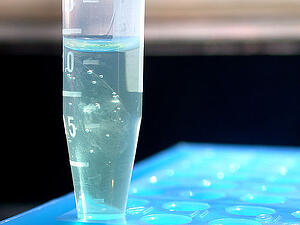Question:
Which is Better Choice for DNA Purification in Ethanol vs. Isopropanol?
The Protein Man Says:
Ethanol is usually the solvent of choice when it comes to precipitating DNA out of a solution but you can also use isopropanol and basically get the same results in the end. So, why do some people use ethanol while some prefer to use isopropanol? What is the difference between the two and how do you know which solvent touse for DNA purification? Here are some things you need to know to help you choose the most suitable solvent for your experimentations.
 Exploring the Basic Differences between Ethanol and Isopropanol for DNA Purification
Exploring the Basic Differences between Ethanol and Isopropanol for DNA Purification
As mentioned earlier, you can use ethanol or isopropanol in precipitating DNA from the solution and get the same end results. However, the solubility of DNA differs in each of these solvent. For the record, DNA is less soluble and falls out of the solution faster even when low concentrations of isopropanol are used but there is a tendency that the salt will co-precipitate with the DNA.On the other hand, a higher concentration of ethanol is needed to precipitate DNA from the solution but then the salts tend to stay soluble, even at lower temperatures.
So, which solvent should you use? Well, this may depend on the volume of the sample you need to precipitate. As a general rule, you should use ethanol if you are only precipitating small volumes of DNA. This way, you can recover larger volumes of DNA without worrying about salt contamination as you would when you choose to use isopropanol. You should also use ethanol if your sample will be stored for long periods of time under low temperatures.
Isopropanol should be used when working with larger samples since you would only need a small amount of the solvent. However, you need to precipitate with minimal incubation time and carry it out at room temperature to minimize salt precipitation.
Now that you know the basic difference between ethanol and isopropanol, you can surely pick the most suitable solvent for DNA purification every time!
For more detailed protocols on ethanol and isopropanol, check out Work of Salt, Isopropanol and Ethanol in DNA Extraction.
Image By - Gravitywave






